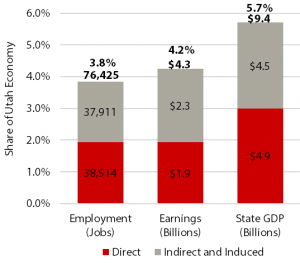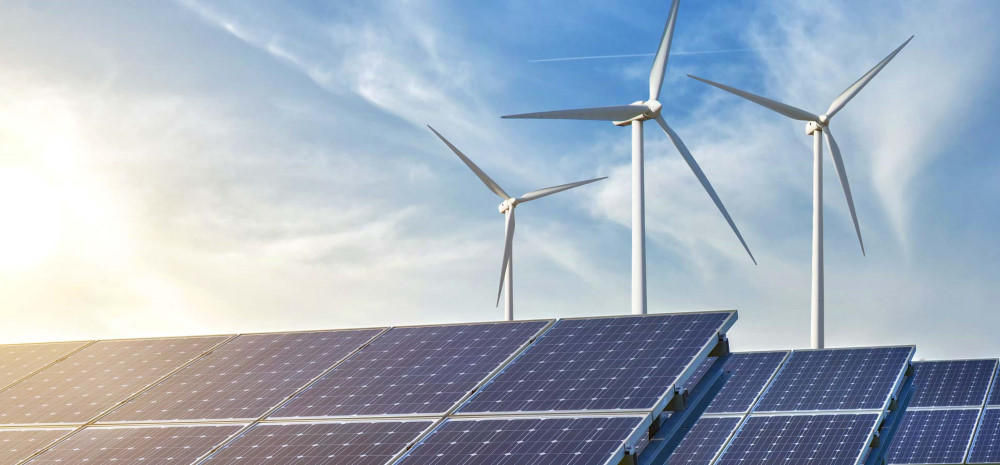Blog Post
Insight: Utah’s Energy Industry
By: John Downen
Note: The opinions expressed are those of the author alone and do not reflect an institutional position of the Gardner Institute. We hope the opinions shared contribute to the marketplace of ideas and help people as they formulate their own INFORMED DECISIONS™.
Feb 11, 2020 – Energy is fundamental to the functioning of a modern economy. It enables every production process, whether of goods or services, and facilitates practically every human endeavor.
The Gardner Institute recently completed an analysis of the economic impacts of Utah’s energy industry. We found the state’s diverse energy industry plays a significant role in our economy. It encompasses both traditional fossil fuels and renewable resources. The mining sector produces crude oil, natural gas, and coal. Power producers generate electricity from coal and natural gas, as well as hydropower, geothermal, solar, wind, and biomass resources, and distribute it within the state and across the western U.S. Five refineries process crude oil from Utah, Colorado, Wyoming, and Canada, and Utah has the only licensed and operating uranium mill in the country. Dozens of firms manufacture machinery for mining and the oil and gas fields as well as turbines, generators, transformers, and other electrical equipment. There are more than 60 petroleum wholesalers and 30 fuel dealers across the state. Solar installation and energy efficiency activities support thousands of jobs.
In 2017, the state’s energy industry directly and indirectly supported 3.8% of the state’s employment, 4.2% of its earnings, and 5.7% of its gross domestic product (GDP) (see Figure 1). Energy activities directly provided an estimated 38,500 full- and part-time jobs, 1.9% of total jobs in the state. Earnings paid to energy workers totaled more than $1.9 billion, 1.9% of total earnings paid.[i] Average earnings in 2017 (excluding energy efficiency jobs) were $81,257 per annum, 60% higher than the statewide average for all industries. Utah’s energy industry contributed $4.9 billion to the state’s GDP, 3.0% of the total.[ii] In addition to this direct economic activity, energy industry purchases supported 37,900 jobs, $2.3 billion in earnings, and almost $4.5 billion in state GDP. The energy industry’s total economic impacts in Utah in 2017 included 76,425 jobs, $4.3 billion in earnings, and $9.4 billion in state GDP.
Utah Energy Industry Economic Impacts, 2017

Note: Does not include direct earnings and GDP associated with energy efficiency jobs.
Source: Kem C. Gardner Policy Institute analysis of data from the Utah Department of Workforce Services, U.S. Bureau of Economic Analysis, Utah Geological Survey, National Association of State Energy Officials, Energy Futures Initiative, and Energy Fuels using the REMI PI+ model.
In addition to jobs, earnings, and GDP, Utah’s energy industry generates a significant amount of revenue for state and local governments. Direct energy-related royalties, severance taxes, conservation fees, property taxes, and sales taxes totaled $492.1 million in 2017.
Utahns enjoy low energy prices. Retail prices for most energy users in Utah range from 6% to 23% below the national average. At current consumption levels, Utahns are saving $578.4 million by not paying national average electricity and natural gas prices. These low prices have also helped fuel the state’s economic growth. We estimated that state GDP is about 0.4% larger than it would have been under national average prices, employment is about 0.3% higher, and earnings are about 0.7% higher.
Utah’s energy sector is evolving with changing technologies and preferences. While Utah coal production has declined over the last decade-plus and fossil fuels have been shrinking as a source of electricity generation, electricity from renewable sources has grown rapidly. In fact, Utah was the fifth-largest producer of utility-scale solar electricity in 2017, accounting for 4.1% of U.S. solar generation. The state’s mix of traditional and renewable energy resources position it to enjoy continued low prices.
John Downen is the deputy director of economic and public policy research at the Kem C. Gardner Policy Institute.
[i] This does not include earnings for 14,600 energy efficiency jobs, as the data were not available and could not be estimated.
[ii] As with earnings, direct GDP from energy efficiency jobs could not be estimated.






